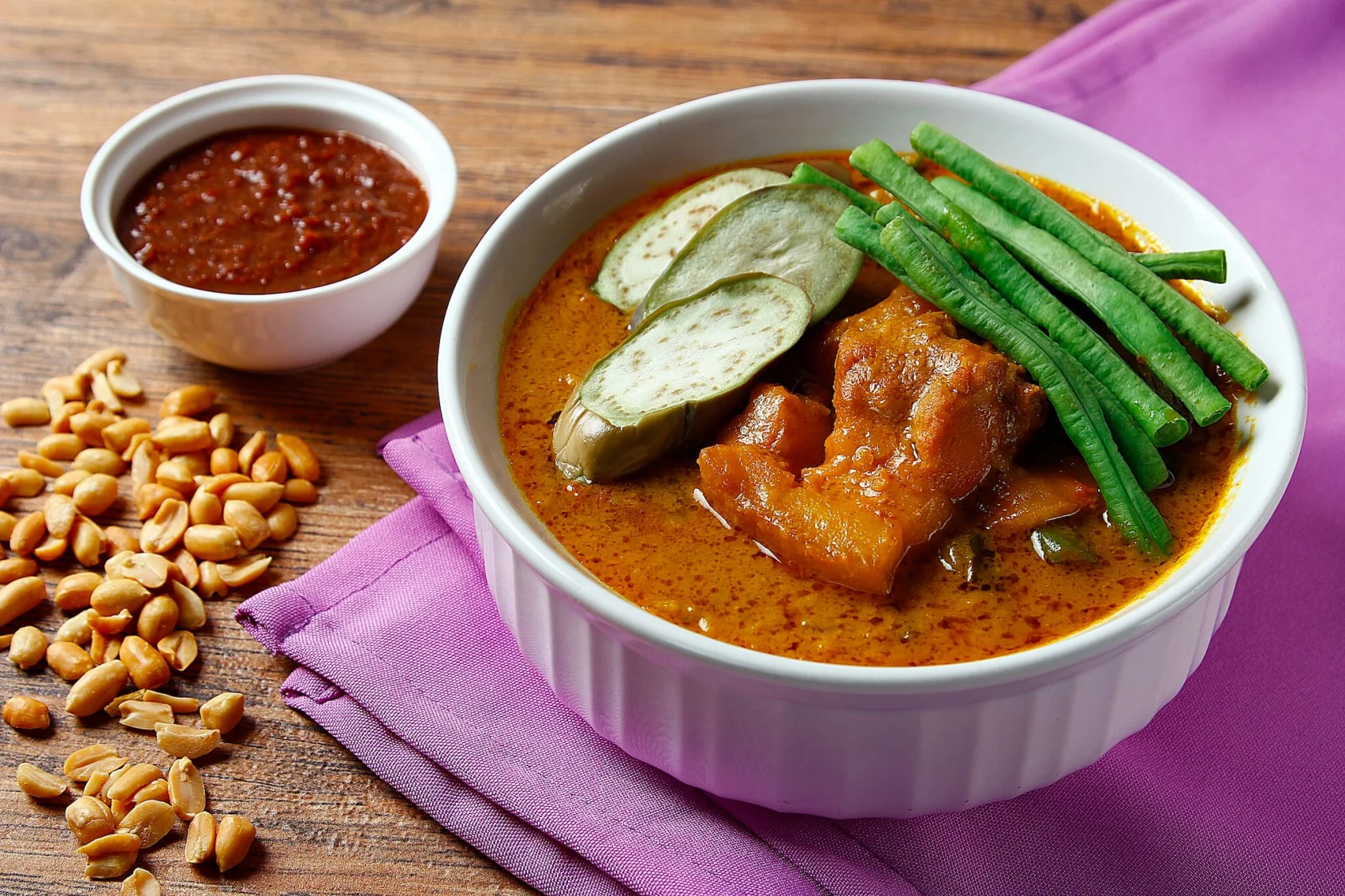
Kare-Kare
A rich stew made with oxtail, vegetables, and a savory peanut sauce.
Ingredients
- •Oxtail
- •Peanut butter
- •Banana heart
- •Eggplant
- •String beans
- •Bagoong
Instructions
Boil
Boil oxtail until tender.
Add Vegetables
Add vegetables and peanut sauce, simmer until cooked.
Kare-kare is a rich and hearty Filipino stew that showcases the unique combination of tender oxtail swimming in a thick, savory peanut sauce alongside an array of fresh vegetables. This distinctive dish is instantly recognizable by its vibrant colors and is often served with bagoong (fermented shrimp paste), which adds an extra layer of umami to its already complex flavor profile.
The origins of kare-kare can be traced back to Pampanga, a province known as the culinary capital of the Philippines. Some food historians believe the dish was influenced by Indian curry during the pre-colonial trade era, while others suggest it was developed by Kapampangan natives using local ingredients. The name itself is thought to be derived from the word "curry," with the repeated syllable being a common feature in Filipino language.
The preparation of kare-kare is a labor of love that begins with slowly simmering oxtail until it becomes tender enough to fall off the bone. The signature peanut sauce is made by combining ground peanuts or peanut butter with rice flour for thickening, and annatto seeds for that characteristic golden-orange color. The dish is completed with a medley of vegetables including banana heart, eggplant, and string beans, which are added near the end of cooking to maintain their texture and color.
While traditional kare-kare uses oxtail, modern variations have emerged using different proteins such as tripe, goat meat, seafood, or even purely vegetarian versions. Some cooks add their personal touch by incorporating roasted ground rice for extra thickness or adjusting the ratio of peanuts to achieve their preferred consistency. The level of bagoong served alongside can also be customized to individual taste preferences.
In Filipino dining culture, kare-kare is typically served as a main dish during special occasions or family gatherings, always accompanied by steaming white rice. The proper way to enjoy it is to take a portion of the stew, add a small amount of bagoong according to taste, and mix it with rice. The contrast between the rich, creamy peanut sauce and the salty, fermented bagoong creates a perfect balance of flavors that Filipinos love.
While undeniably delicious, kare-kare comes with some nutritional considerations. The dish is relatively high in calories and fat due to the peanut-based sauce and fatty cuts of meat. A single serving can contain upwards of 600 calories. Additionally, those with peanut allergies should obviously avoid this dish. The high sodium content from the bagoong should also be considered by those watching their salt intake. However, the dish does offer good protein content and the vegetables provide essential nutrients and fiber. For a healthier version, one can opt for leaner cuts of meat or increase the proportion of vegetables.
